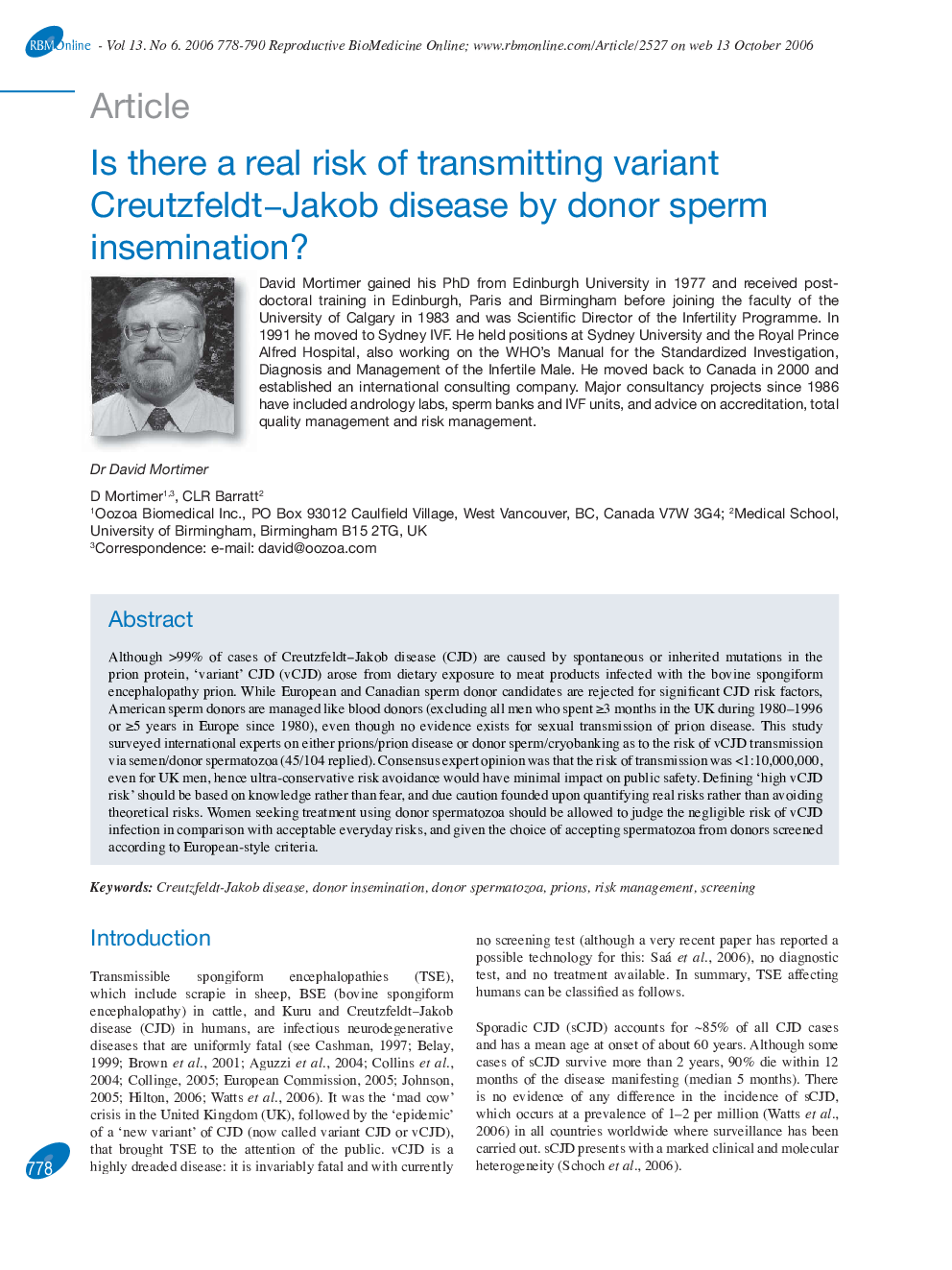| Article ID | Journal | Published Year | Pages | File Type |
|---|---|---|---|---|
| 3973390 | Reproductive BioMedicine Online | 2006 | 13 Pages |
Although >99% of cases of Creutzfeldt-Jakob disease (CJD) are caused by spontaneous or inherited mutations in the prion protein, ‘variant’ CJD (vCJD) arose from dietary exposure to meat products infected with the bovine spongiform encephalopathy prion. While European and Canadian sperm donor candidates are rejected for significant CJD risk factors, American sperm donors are managed like blood donors (excluding all men who spent ≥3 months in the UK during 1980–1996 or ≥5 years in Europe since 1980), even though no evidence exists for sexual transmission of prion disease. This study surveyed international experts on either prions/prion disease or donor sperm/cryobanking as to the risk of vCJD transmission via semen/donor spermatozoa (45/104 replied). Consensus expert opinion was that the risk of transmission was <1:10,000,000, even for UK men, hence ultra-conservative risk avoidance would have minimal impact on public safety. Defining ‘high vCJD risk’ should be based on knowledge rather than fear, and due caution founded upon quantifying real risks rather than avoiding theoretical risks. Women seeking treatment using donor spermatozoa should be allowed to judge the negligible risk of vCJD infection in comparison with acceptable everyday risks, and given the choice of accepting spermatozoa from donors screened according to European-style criteria.
